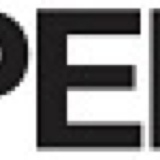Information
-
Document No.
-
Audit Title
-
Client / Site
-
Conducted on
-
Prepared by
-
Location
-
Personnel
Work Environment
Item OSH REG (1996) - sec. 3.6, 3.7, 3.14
-
1.0) Does the worksite have clearly defined walkways?
-
1.2 ) Are walkways kept clear?
-
1.3) Are chairs, desks or benches at correct working height?
-
1.4) Have slip or trip hazards been removed from the office floor?
-
1.5) Is there clear vision for personnel at all onsite traffic intersections?
-
1.6) Are all safety signs visible?
-
1.7) Is there sufficient space for personnel to perform duties?
-
1.8) Are workbenches kept clean and free from obstructions?
-
1.9) Are heavy items kept down low?
Electrical
ELECTRICAL Item OSH REG (1996) - sec. 3.59, 3.60, AS/NZS 3012:2010
-
2.0) Are RCD's installed on the portable main boards around the site?
-
2.1) Is the RCD tag up to date (within 3 months)
-
2.2) Are the RCD's in the site shed tagged and tested (within 3 months)?
-
2.3) Randomly inspect power tools. <br>Are they in good working condition? (i.e. free from damage)
-
2.4) Is electrical equipment up to date with tag and testing?
-
2.5) Are electrical cables and extension leads appropriately used and properly hung so as to not pose a trip hazard?
-
2.6) Is damaged electrical equipment tagged as 'out of service'?
-
2.7) Can you identify and unconnected cables dangling from the ceiling or wall cavity?
Powered Plant & Equipment
Item AS 1319:1994, AS 1473:1991
-
3.0) Randomly inspect powered plant. <br>Is it kept tidy and in good condition?
-
3.1) Does powered plant have the operator's manual in the cabin?
-
3.2) Are the pre-start checks recorded on in the powered plant logbook?
-
3.3) Does powered plant reversing siren operate?
-
3.4) Does powered plant have a fire extinguisher in the cabin? Is it tagged and up to date (every 6 months)?
-
3.5) Does the site have a copy of powered plant maintenance records?
-
3.6) Are there any dead man switches or emergency stop buttons? Do they work?
-
3.7) Does the powered plant operator have the appropriate certificate or licence to operate the item?
-
3.8) If so, does Cooper & Oxley have a copy of this licence or competency?<br>(competency may include an official letter from the subcontractor noting that the individual is competent)
-
3.9) Does the powered plant have a designated refuelling area?
-
3.10) Does equipment have protective guards installed?
-
3.11) Do welding and grinding activities implement screens or bays to prevent eye injuries to those around?
-
3.12) Do hot work activities have fire extinguishers close by?
-
3.13) Is the Plant & Equipment Register up to date with plant currently on site?
-
3.14) Has a Plant Risk Assessment been completed for plant and equipment identified on register?
Lighting
Item OHS REG (1996) - sec. 3.13
-
4.0) Is there sufficient light for the task being undertaken?
-
4.1) Is there emergency lighting installed in necessary areas?<br>(i.e. below-ground areas or confined spaces)
-
4.2) Does emergency lighting work?
-
4.3) Is emergency lighting tested regularly?
-
4.4) Are there any potential harsh reflective surfaces near plant equipment or operating machinery?
-
4.5) Are supplementary light sources required?
First Aid
Item OSH REG (1996) - sec. 3.12
-
5.0) Is the First Aid Kit (s) in an accessible and familiar position with an appropriate sign?
-
5.1) Is the First Aid Kit adequately stocked?
-
5.2) Are there a sufficient number of First Aid Kits available?
-
5.3) Is the name(s) of the First Aid Officer displayed on the site notice board?
-
5.4) Does the site have a portable First Aid Kit?
-
5.5) Are First Aid cases recorded on the First Aid register?
-
5.6) How many Cooper & Oxley site personnel are trained in first aid?
-
5.7) Are there any eye wash stations available on site?
-
5.8) Are they in workable order?
-
5.9) Are they in an accessible area?
Safety Signage
Item AS 1319:1994, OSH REG (1996) - sec. 3.11
-
6.0) Does the site have the mandatory C&O sign at the front gate? (PPE expectations, tag testing etc.)
-
6.1) Does the site notice board have a First Aid Officer sign with the name of the current FA Officer?
-
6.2) Does the site have a sign denoting the nearest medical facility or hospital?
-
6.3) Does the site require a speed limit sign?
-
6.4) Is there a HAZCHEM sign located on the hazardous substances shed?
Housekeeping
Item OSH REG (1996) - sec. 3.6, 3.7
-
7.0) Is the work area clear of clutter, cut offs or other material which may be a trip hazard?
-
7.1) Is the workplace clean and tidy?
-
7.2) Do the floors possess non-slip qualities?
-
7.3) Has the interior site office been well set up?
-
7.4) Is rubbish disposed of regularly?
-
7.5) Does the site maintain a high level of housekeeping?<br>(or does the site appear unkept)
Emergency Procedures
Item OSH REG (1996) - sec. 3.10
-
8.0) Is the Emergency Management Plan available?
-
8.1) Does the Site Manager understand what to do in the event of an emergency?
-
8.2) Do personnel understand what to do in the event of an emergency?
-
8.3) Are personnel aware of the Emergency Plan and is it highlighted during toolbox meetings?
-
Random question to site worker:<br><br>a) 'What does a continuous siren mean?'<br>b) 'What does short beeps of the siren mean?'
-
8.6) Are evacuation drills held?
-
8.7) When was the last evacuation drill held?
-
8.8) Does the site office & notice board have a list of up to date emergency numbers and contacts?
-
8.9) Are emergency lights installed where required?
-
8.10) Are they tested regularly?
-
8.11) Are all avenues of emergency access and egress clear?
-
8.12) Does the site have a muster point sign?
-
8.13) Does the sign face inward to site?
-
8.14) Is there a Fire Warden on site?
-
8.15) If YES, who is it?
Management & Administration
Item OSH REG (1996) - sec. 3.2, 5.21
-
9.0) Are the OSH Act 1984 and REG's available for the personnel to view?
-
9.1) Is the C&O OHS policy displayed in prominent areas?
-
9.2) Are induction records completed correctly?<br>(white card and high risk work licenses photocopied and stapled to the site induction)
-
9.3) Have inductees completed the electrical, hazardous substances and plant registers?
-
9.4) Have official letters from subcontractors defining workers competence been issued and stapled to the induction?<br>(i.e. official letterhead outlining how an employee is competent)
-
9.5) Are fortnightly site inspections undertaken?
-
9.6) Are inspections identifying areas of improvement?<br>(i.e. requiring action)
-
9.7) Give example of an action and how it was closed out.
-
9.8) Are fortnightly environmental audits undertaken?
-
9.9) Do audits identify areas of improvement?<br>(i.e. requiring action)
-
9.10) Give an example of an action and how it was closed out.
-
9.11) Are SWMS being submitted on C&O templates?
-
9.12) Are SWMS reviewed by the Site Manager using the official checklist (HSE008.75)?
-
9.13) Are SWMS updated when conditions change?
-
9.14) Are checks made to ensure subcontractors are keeping to their signed SWMS?
-
9.15) Are toolbox meetings held weekly?
-
9.16) Are copies of Toolbox meetings filed away on site?
-
9.17) Do Toolbox meetings involve Emergency Management scenarios at least once a month?
-
9.18) Are Toolbox meeting minutes made available on the site notice board?
-
9.19) Are safety meetings held with subcontractors (including committee meetings)?
-
9.20) When was the last formal safety meeting?
-
9.21) Were records kept (use HSE008.30)
-
9.22) Are Safe Work Instructions available for personnel to view?
-
9.23) Do all Cooper & Oxley employees wear mandatory PPE on site (hard hat, hi-vis and boots)?
-
9.24) Documentation revision.<br>Are the correct document versions being used on site?
-
9.25) Does the site have access to updated documents via the C&O server?
Incidents, Near Misses, NCR & PIN
INCIDENT/NEAR MISS
-
10.0) Are incidents and near missed reported to the Site Manager?
-
10.1) Does the site keep accurate records of incidents?<br>(use HSE008.3)
-
10.2) Are thorough investigations conducted after a recordable case (MTC or LTI)?
-
10.3) Are safety controls implemented to stop incidents/near misses from reoccurring?
-
10.4) Is the Online Safety Management System updated after an incident?
-
10.5) Are site incidents discussed during toolbox meetings?<br>(safety & environmental incidents)
NON CONFORMANCE REPORT
-
10.6) Are non-conformance reports issued to the subcontractors?<br>(use HSE008.44)
-
10.7) Is the non-conformance register up to date?<br>(use HSE 008.44.1)
-
10.8) Are non-conformances followed up to ensure close out?
PROVISIONAL IMPROVEMENT NOTICE
-
10.9) Is the site safety representative registered with WorkSafe WA?
-
10.10) Has the registered safety representative issued PIN's to subcontractors?<br>(use HSE 008.80)
Workplace Hygiene Facilities
Item OSH REG (1996) - sec. 3.20, 3.17, 3.2, 3.44B, 3.1
-
11.0) Washrooms and toilets clean and well stocked?
-
11.1) Is the lunch area suitably detached from work areas?
-
11.2) Is the lunch room area tidy?
-
11.3) Is there a supply of fresh drinking water available?
-
11.4) Are general amenities clean & tidy?
-
11.5) Is there a designated smoking area on site?
-
11.6) If a non-smoking site, where do personnel smoke?
Personal Protection
Item OSH REG (1996) - sec. 3.32, 3.402, AS/NZS 1337:2007, 1715:1994, 1716:2003, 1270:2005, 2210.4:2000
-
12.0) Randomly observe work activity. Are all personnel wearing necessary PPE?
-
12.1) How are repeat offenders reprimanded?
-
12.2) Does the site require signage directing the use of additional PPE?
-
12.3) What types of PPE are available to site personnel?
-
12.4) Are there adequate stocks of PPE available on site?
-
12.5) Should site personnel be wearing eye protection (which doubles as sun glasses)?
-
12.6) Are dust masks being worn during dusty activities?<br>(i.e. concrete cutting, demolition etc.)
-
12.7) Is hearing protection being worn when using noisy plant or equipment?
-
12.8) Do site personnel have access to sun cream?
Fire Prevention
Item OSH REG 1996 - sec. 3.9, AS 2444:1997, AS/NZS 1221:1991
-
13.0) Is there a Fire Warden on site?
-
13.1) Are there fire extinguishers available on site?
-
13.2) Are enough provided?
-
13.3) Random inspection. Is the fire extinguisher full charged?
-
13.4) Are service tags up to date (serviced every 6 months)?
-
13.5) Are fire extinguishers appropriate for the type of work on site?
-
13.6) Are they in a clean, operable condition?
-
13.7) Are they in an accessible but safe area?
-
13.8) Is there appropriate signage above the extinguisher?
-
13.9) Are hot work permits issued for hot work tasks?
-
13.10) Are hot work permits signed off by the Site Manager?
-
13.11) Are fire extinguishers located in the area of hot work?
-
13.12) Are fire extinguishers in the cabin on mobile powered plant (if detailed in manufacturers operators manual)?
-
13.13) Are service tags up to date (serviced every 6 months)?
Work Practices
-
14.0) Do personnel review SWMS prior to commencing work?
-
14.1) Are work permits submitted to the site manager before commencing high risk work?<br>(i.e. WAH, Excavation etc.)
-
14.2) Is manual handling aids used by site personnel?
SCAFFOLDS
-
14.3) Are mobile scaffolds in use on site?
-
14.4) Are wheels locked in when in use?
-
14.5) Are scaffolds above 4m constructed by a licensed scaffolder?
-
14.6) Does the scaffold have a current scaf tag with weight limit?
-
14.7) Are sole plates secure and in good condition?
-
14.8) Are base plates positioned centrally on soleplates?
-
14.9) Are ledgers and transoms level?
-
14.10) Does the scaffold have kick boards installed?
-
14.11) Are ladders tied off properly and pitched at 1:4?
-
14.12) Where the gap between the structure and the scaffold is more than 225mm, has edge protection or hop-ups been provided?
Environmental Audit
AIR QUALITY / DUST
AS 1668.2:2002, OSH REG (1996) - sec. 3.39
-
15.0) Is the project dust management sub-plan implemented on site?
-
15.1) Do boundary fences have shade sloth to prevent movement of airborne particles?
-
15.2) Are stockpiles covered when on ground or during transportation?
-
15.3) Are external roads regularly swept to remove sediment?
-
15.4) Are water carts or sprinklers used to control dust/
-
15.5) Is dust generating activity suspended during times of high wind?
-
15.6) Is there a designated smoking area?
-
15.7) Is the air temperature controlled in the site sheds?
NOISE & VIBRATION
Item AS/NZS 1269.1:2005
-
16.0) Is the project noise & vibration management sub-plan implemented?
-
16.1) Is hearing protection available to site personnel?
-
16.2) Are hearing protection signs clearly visible and legible?
-
16.3) Are personnel exposed to noise levels exceeding 85dba (similar to busy curb-side or above)?
-
16.4) Is it necessary to fit a noise suppressing devices to equipment or plant?
-
16.5) Have there been any noise complaints from surrounding business or community members?
-
16.6) Has the site complaint register been updated?<br>(use HSE008.82)
-
16.7) Have noise complaints been addressed?
-
16.8) Are tasks involving excessive noise scheduled to after 9am and before 5pm (or there about)?
-
16.9) Are dilapidation surveys necessary for surrounding business and residential areas?
HAZARDOUS SUBSTANCES
Item OSH REG (1996) - sec. 3.11/5.8/5.12/5.13/5.21 & AS 1596
-
17.0) Is the MSDS up to date and maintained with on site chemicals?
-
17.1) Do subcontractors submit MSDS's when bringing new substances onto site?
-
17.2) Is protective equipment available for handling hazardous substances?
-
17.3) Are hazardous substances containers adequately labelled?
-
17.4) Are all areas in which hazardous substances are used, or stored, well ventilated and in a cool area away from ignition sources?
-
17.5) Have the chemicals been segregated into their respective classes?
-
17.6) Are spill pallets used to contain hazardous substances from entering soil or water sources?<br>(E.g. plant, oil, HCl etc.)
-
17.7) The storage site for chemicals is in a suitably safe location?
-
17.8) Are oxy cylinders & LPG separated by at least 5m indoors & 3m outdoors? (AS 1596, sec. 2.7.1)
-
17.9) Are signs prominent and legible?<br>(No Smoking, HAZCHEM, Flammable Goods etc.)
-
17.10) Does a waste collection and disposal system exist for chemicals?













